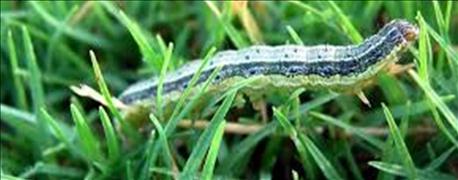
There's an army on the move across Kansas and it's devouring alfalfa fields, threatening milo and soybean fields and worrying people who plan to plant wheat for winter pasture.
"I first noticed the moths," said Roger Black, a hay dealer in Cowley County. "Then the worms were there and in a few days, we went from a really good looking stand of alfalfa to nothing more than quarter-inch tall stubble. I really think this invasion has the potential to have an impact on hay supply and demand."
Black said the numbers of moths this year is a factor of cyclical reproductive patterns combined with warm, humid weather."

ARMY WORMS: A big infestation of this pest is being spotted in Kansas fields. It appears that huge populations are cyclical.
In Garden City, Kansas State University entomologist Sarah Zukoff said army worm pressure is especially heavy this year.
"I would say this is my number one concern at this time," Zukoff said.
Black said he has been told that the problem won't go away until freezing weather hits. So far, the worms seem to vastly prefer alfalfa and brome grass and have not been as aggressive in milo and soybean fields.
"Each moth can lay 1,000 eggs a day for several days," he said. "When the first hatch is out there, it is green and not very visible and the damage isn't obvious right away. Then you get a more mature worm and it eats the whole plant."
The army worm goes through eight growth (and eating) stages from newly hatched worm to ready-to-reproduce moth. But the whole process happens fast enough that a single season can produce several generations of army worms.
Black said his primary defense initially was to try to cut and bale alfalfa ahead of the worm infestation. That has not worked, he said.
"We have cut the worst fields first but I wish we had sprayed for worms," he said. "One of the reasons that I didn't spray was the forecast of constant rain and the worry that the spray would be wasted."
Black said he has noticed that the grass at the edge of the field is full of moths and it has been clear to him that the 7 inches of rain that his area received in the middle of September did not kill the worms.
"I know that when I swathed my field trying to get it harvested ahead of the worms eating it, my swather was covered in worms," he said. "This is a truly devastating year."
ARMY WORM: The moths that produce the army worm threat arrive in the fall and lay eggs. Their larvae voraciously devour plants as they pass through eight growth stages to adult stage -- where they lay more eggs and start the destructive process over and over until a killing freeze stops their reproductive activity.
About the Author(s)
You May Also Like






